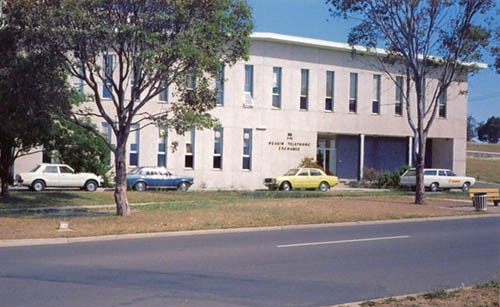The Deakin NASCOM Switching Centre, at 107 Kent Street, in the Canberra suburb of Deakin, was a central communication point for the Australian tracking stations.
Part of the worldwide NASCOM network, and responsible for all NASA communications in this part of the world, it was a key link in the chain that should not be forgotten.
Early 1980s photo: Joe Gormly. Scan: Colin Mackellar.
